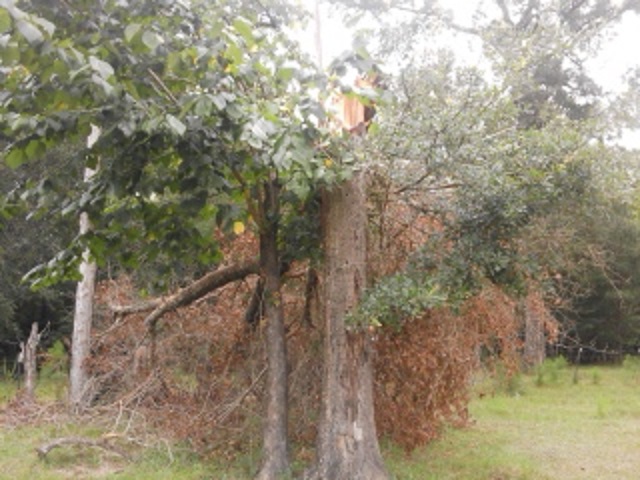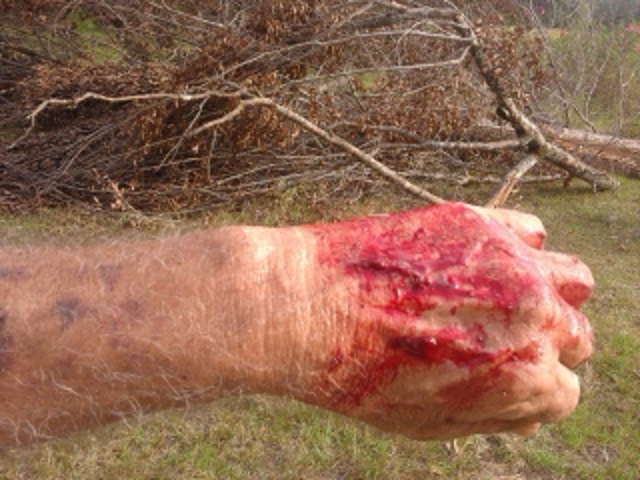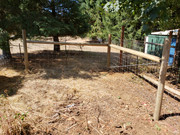libertygarden
Well-known member
OK, thank, you. I'll replace the carbon wire with high tensile. Just saw the picture, so run the loop over the entire assembly instead of into each H separately.

libertygarden":3drvz72j said:OK, thank, you. I'll replace the carbon wire with high tensile. Just saw the picture, so run the loop over the entire assembly instead of into each H separately.
Before gripples, I have used HT barb wire on occassion for brace wire,but went solely to HT barbless and used a twist stick, which in my case was always a steel rod of some kind. It can get your B hole puckering pretty good making the last couple of turns on that 'twist stick'...Farm Fence Solutions":37ix06fx said:Low carbon brace wire instead of HT is like riding a bike cross country vs flying. Low carbon will keep on stretching, HT won't. A twist stick in HT is a good way to get hurt. Use a ratchet strainer, a Gripple, or tighten with a chain strainer and tie or crimp with HT brace wire......Or just use a Gripple brace kit and be done with it.
Also, on a double brace, if you run the brace wire from the top of the second brace post to the base of the strain post, you'll increase the holding power of your strain post by about 15%. By flattening out the brace wire, the upward force is reduced which helps prevent the strainer from popping out under load.

greybeard":23psdx9o said:Before gripples, I have used HT barb wire on occassion for brace wire,but went solely to HT barbless and used a twist stick, which in my case was always a steel rod of some kind. It can get your B hole puckering pretty good making the last couple of turns on that 'twist stick'...Farm Fence Solutions":23psdx9o said:Low carbon brace wire instead of HT is like riding a bike cross country vs flying. Low carbon will keep on stretching, HT won't. A twist stick in HT is a good way to get hurt. Use a ratchet strainer, a Gripple, or tighten with a chain strainer and tie or crimp with HT brace wire......Or just use a Gripple brace kit and be done with it.
Also, on a double brace, if you run the brace wire from the top of the second brace post to the base of the strain post, you'll increase the holding power of your strain post by about 15%. By flattening out the brace wire, the upward force is reduced which helps prevent the strainer from popping out under load.

libertygarden":1de1l3yq said:So a role of HT barbless Gaucho can work? It's certainly cheaper than the 12.5 ga HT that goes on a spinning Jenny.
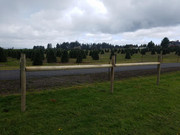
Farm Fence Solutions":dqkpcm3i said:libertygarden":dqkpcm3i said:So a role of HT barbless Gaucho can work? It's certainly cheaper than the 12.5 ga HT that goes on a spinning Jenny.
You're going to keep getting what you pay for. If you want cheap and easy that actually works, call my wife and order Gripple brace kits. Just ask Ron, and he'll tell you how well they work. Especially good for working back in the sticks.
https://www.farmfencesolutions.com/prod ... brace-kit/
fence_it":109k6oqo said:Here is a good guide for those who would like to learn more about the basics of fencing. https://www2.gov.bc.ca/gov/content/indu ... es-fencing

Farm Fence Solutions":1cryfzuh said:fence_it":1cryfzuh said:Here is a good guide for those who would like to learn more about the basics of fencing. https://www2.gov.bc.ca/gov/content/indu ... es-fencing
Some good stuff in there, but you have to do a little sorting. :lol:
Never ever do this:

fence_it":1r0ai6we said:Farm Fence Solutions":1r0ai6we said:fence_it":1r0ai6we said:Here is a good guide for those who would like to learn more about the basics of fencing. https://www2.gov.bc.ca/gov/content/indu ... es-fencing
Some good stuff in there, but you have to do a little sorting. :lol:
Never ever do this:

I seen that and it made me wince, wouldn't be so bad if the wraps were at least tight.
Farm Fence Solutions":2pxxkfz8 said:fence_it":2pxxkfz8 said:Farm Fence Solutions":2pxxkfz8 said:
I seen that and it made me wince, wouldn't be so bad if the wraps were at least tight.
No, it'd still be just as bad. :lol: You can't stretch a fence by the stay wires, which is what would be happening there with the line wires run around the stays. It was dissaponting, because they really did have a good start on the presentation. The barbed wire "knots" were pretty bad, too. I suspect the photographer and fence builder were of no relation to the author. Thanks for posting the link....I did save it for the good parts.

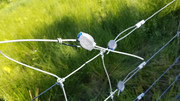
fence_it":3knf54iq said:Farm Fence Solutions":3knf54iq said:fence_it":3knf54iq said:I seen that and it made me wince, wouldn't be so bad if the wraps were at least tight.
No, it'd still be just as bad. :lol: You can't stretch a fence by the stay wires, which is what would be happening there with the line wires run around the stays. It was dissaponting, because they really did have a good start on the presentation. The barbed wire "knots" were pretty bad, too. I suspect the photographer and fence builder were of no relation to the author. Thanks for posting the link....I did save it for the good parts.
Didn't catch that with the stay wires. I've seen wire joined where the line wire is ran through the knot. Using the geared wire twister, a nice looking join can be made. Even though, you can see in this picture it inevitably came apart when a snow load was placed on the fence. So the strength of it is questionable. In this situation the gripples fared much better except for the top wire. Photo credit to Ben Hartwell from the Ag Fencers page.

Farm Fence Solutions":2lqs68qo said:fence_it":2lqs68qo said:Here is a good guide for those who would like to learn more about the basics of fencing. https://www2.gov.bc.ca/gov/content/indu ... es-fencing
Some good stuff in there, but you have to do a little sorting. :lol:
Never ever do this:

cows don't push on it because they got plenty of snow on their side they don't really care to get at the snow on the other sidecallmefence":2m60zmoj said:Farm Fence Solutions":2m60zmoj said:fence_it":2m60zmoj said:Here is a good guide for those who would like to learn more about the basics of fencing. https://www2.gov.bc.ca/gov/content/indu ... es-fencing
Some good stuff in there, but you have to do a little sorting. :lol:
Never ever do this:

That's the ol' Canadian cross twist......
